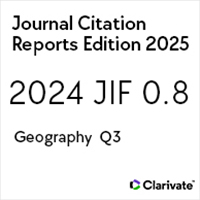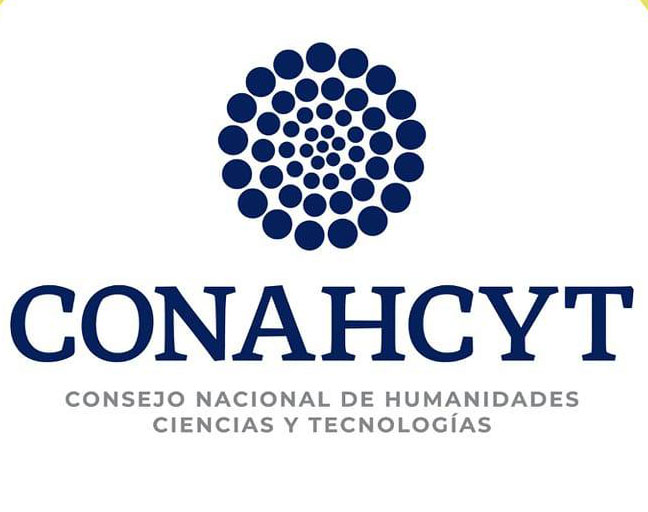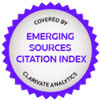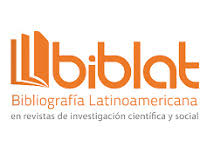Protection of border regions-cities located between states possessing nuclear weapons and non nuclear weapon states: new norms in international law
Protección de regiones-ciudades fronterizas ubicadas entre Estados con armas nucleares y Estados sin armas nucleares: nuevas normas en el derecho internacional
https://doi.org/10.21670/ref.2214098
Keywords:
border regions and cities, protection norm, humanitarian impact, nuclear disarmament, international treatiesAbstract
The objective of this article is to analyze the border regions-cities between States possessing nuclear weapons and non-nuclear-weapon States for a norm proposal of protection to prevent the risk of a nuclear attack. The research identified States, the number of cities and population of border regions, and compared the amount of population of such regions with the population covered by the treaties of the nuclear-weapons-free zones and the treaties of nuclear-weapon-free geographical regions-areas. The study analyzed the humanitarian consequences of a hypothetical nuclear detonation in a border region between the United States and Mexico (Tijuana-San Diego case) and its geopolitical implications for international security. The conclusions expose that the border regions are vulnerable in the absence of norms, and the proposal is viable for the creation of an international norm of protection compatible with the treaties that seek nuclear disarmament.Resumen
El objetivo de este artículo es analizar las regiones-ciudades fronterizas entre Estados con armas nucleares y Estados sin armas nucleares para una propuesta de norma de protección orientada a prevenir el riesgo de ataque nuclear. La investigación identificó Estados, cantidad de ciudades y de población de las regiones fronterizas y comparó la cantidad de población de las regiones fronterizas con la población cubierta por los tratados de zonas libres de armas nucleares y los tratados de regiones-áreas geográficas libres de armas nucleares. El estudio analizó las consecuencias humanitarias de una hipotética detonación nuclear en una región fronteriza entre Estados Unidos y México (caso Tijuana-San Diego) y sus implicaciones geopolíticas en la seguridad internacional. Las conclusiones exponen que las regiones fronterizas son vulnerables ante la ausencia de normas, y la propuesta es viable para la creación de una norma internacional de protección compatible con los tratados que buscan el desarme nuclear.References
Berkowitz, B., Karklis, L. & Meko, T. (2017, 25 de julio). What is North Korea trying to hit? A closer look at Pyongyang’s propaganda provides clues to Kim Jong Un’s nuclear strategy The Washington Post. Recuperado el 27 de julio de 2017 de https://www.washingtonpost.com/graphics/world/north-korea-targets/?utm_term=.5def44cd4dd1
Borrie, J, Caughley, T, Hugo, T. G., Løvold, M., Nystuen, G. & Waszink, C. (2016). A prohibition on nuclear weapons. A guide to the issues. International Law and Policy Institute (ILPI)/United Nations Institute for Disarmament Research (Unidir). https://www.unidir.org/publication/prohibition-nuclear-weapons-guide-issues
Borrie, J, Dimmen, A. G., Hugo, T. G., Waszink, C. & Egeland, K. (2016). Gender, development and nuclear weapons. Shared goals, shared concerns. International Law and Policy Institute (ILPI)/United Nations Institute for Disarmament Research (Unidir). https://unidir.org/publication/gender-development-and-nuclear-weapons-shared-goals-shared-concerns
Brixey-Williams, S. (2019). Reporting on nuclear disarmament. Success and failure in 25 years of disarmament diplomacy. British American Security Information Council (Basic). https://basicint.org/report-reporting-on-nuclear-disarmament-success-and-failure-in-25-years-of-disarmament-diplomacy/
California Department of Education. (s. f.). California school directory. Recuperado el 21 de mayo de 2021 de https://www.cde.ca.gov/schooldirectory/
California Health and Human Services Open Data. (s. f.). Hospital Building Data. Recuperado el 14 de abril de 2021 de https://data.chhs.ca.gov/dataset/hospital-building-data
Comisión Internacional de Límites y Aguas entre México y los Estados Unidos (CILA). (2017, 16 de marzo). CILA, 125 años preservando la integridad territorial de México y la distribución de las aguas internacionales en la frontera norte. https://cila.sre.gob.mx/cilanorte/index.php/quienes-somos/historia
Daugherty, W., Levi, B. & Von Hippel, F. (1986). The consequences of “limited” nuclear attacks on the United States. International Security, 10(4), 3-45. https://www.jstor.org/stable/2538949 DOI: https://doi.org/10.2307/2538949
Dimmen, A. G. (2014). Gendered impacts. The humanitarian impacts of nuclear weapons from a gender perspective (Artículo 5 de 6, Vienna Conference Series). ILPI-Unidir https://unidir.org/publication/gendered-impacts-humanitarian-impacts-nuclear-weapons-gender-perspective
Dirección General de Planeación, Programación y Estadística Educativa. (s. f.). Sistema interactivo de consulta de estadística educativa. Secretaría de Educación Pública. https://www.planeacion.sep.gob.mx/principalescifras/
Duffield, J. & Von Hippel, F. (1984). The short-term consequences of nuclear war for civilians. En J. London & G. F. White (Eds.), The enviromental effects of nuclear war (pp. 19-64). American Association for the Advancement of Science/Westview Press. https://scholarworks.gsu.edu/cgi/viewcontent.cgi?article=1086&context=political_science_facpub DOI: https://doi.org/10.4324/9780429310560-2
Federal Emergency Management Agency (FEMA). (1987). Nuclear attack planning base-1990. Final project report. Annex A. Direct effects & fire risk statistics & maps. https://nuke.fas.org/guide/usa/napb-90/annexa.pdf
Europe Integration Foreign Affairs. (2014). Vienna Conference on the Humanitarian Impact of Nuclear Weapons 8 to 9 December 2014. Report and summary of findings of the conference presented under the sole responsibility of Austria. Federal Ministry Republic of Austria. https://www.bmeia.gv.at/fileadmin/user_upload/Zentrale/Aussenpolitik/Abruestung/HINW14/HINW14_Chair_s_Summary.pdf
Glasstone, S. & Dolan, P. J. (1977). The effects of nuclear weapons (3rd. ed.). United States Department of Defense/United States Department of Energy. https://doi.org/10.2172/6852629 DOI: https://doi.org/10.21236/ADA087568
George, A. L. & Smoke, R. (1974). Deterrence in American foreign policy: theory and practice. Columbia University Press.
Gómez Robledo, J. M. (2008). Las garantías otorgadas mediante declaraciones unilaterales contenidas en resoluciones del Consejo de Seguridad de la ONU. El Tratado de Tlatelolco Memoria de su Cuarenta Aniversario (pp. 131-138). Secretaría de Relaciones Exteriores.
Google. (s. f.). [Mapa del mundo con divisiones políticas] Recuperado el 5 de marzo de 2017 de https://www.google.com.mx/maps
Instituto Antártico Chileno. (2019). Países. Ministerio de Relaciones Exteriores Gobierno de Chile. http://www.inach.cl/inach/?page_id=193
Instituto Nacional de Estadística y Geografía (Inegi). (2021a). Censo de Población y Vivienda 2020 (Tabulados del cuestionario básico. Hogares censales por municipio según número de integrantes. Hoja 4). https://www.inegi.org.mx/contenidos/programas/ccpv/2020/tabulados/cpv2020_b_bc_13_hogares_censales.xlsx
Instituto Nacional de Estadística y Geografía (Inegi). (2021b). Censo de Población y Vivienda 2020 (Tabulados del cuestionario básico. Hoja 1). https://www.inegi.org.mx/contenidos/programas/ccpv/2020/tabulados/cpv2020_b_bc_01_poblacion.xlsx
Instituto Matías Romero & Secretaría de Relaciones Exteriores. (2008). El Tratado de Tlatelolco, Memoria de su Cuarenta Aniversario. SRE.
Jáquez Huacuja, M. A. (2015). México y el difícil camino hacia nuevos foros de desarme. En G. González G., O. Pellicer & N. Saltalamacchia (Eds.), México y el multilateralismo del siglo XXI (pp. 96-133). Siglo XXI editores/ITAM.
Kierulf, J. (2017). Disarmament under international law. McGill-Queen’s University Press.
Kristensen, H. & Mckinzie, M. (2014, 8-9 de diciembre). Nuclear deterrence, nuclear war planning, and scenarios of nuclear conflict [Ponencia]. Vienna Conference on The Humanitarian Impact of Nuclear Weapons. Austria.
Kristensen, H. M. & McKinzie, M. (2012). Reducing alert rates of nuclear weapons. United Nations Institute for Disarmament Research. https://www.unidir.org/publication/reducing-alert-rates-nuclear-weapons
Kristensen, H. M., Norris, R. S. & McKinzie, M. G. (2006). Chinese nuclear forces and U.S. nuclear war planning. Federation of American Scientists/Natural Defense Council. https://nuke.fas.org/guide/china/Book2006.pdf
Malik, J. (1985). The yields of the Hiroshima and Nagasaki nuclear explosions. Los Alamos National Laboratory. http://large.stanford.edu/courses/2018/ph241/cheng2/docs/malik.pdf DOI: https://doi.org/10.2172/1489669
México, Gobierno de la Republica. (2014, 13-14 de febrero). Second Conference on the Humanitarian Impact of Nuclear Weapons —Chair’s Summary—. Nayarit, México. https://www.reachingcriticalwill.org/images/documents/Disarmament-fora/nayarit-2014/chairs-summary.pdf
Mingst, K. (2007). Fundamentos de las relaciones internacionales. CIDE.
Mingst, K. A. & Arreguín-Toft, I. M. (2018). Fundamentos de las relaciones internacionales. CIDE.
Missile Defense Project. (2018a, 14 de junio). Ground-based Midcourse Defense (GMD) System. Missile Threat. Center for Strategic and International Studies. Recuperado el 15 de julio de 2021 de https://missilethreat.csis.org/system/gmd/
Missile Defense Project. (2018b, 14 de junio). Missiles of North Korea. Missile Threat. Center for Strategic and International Studies. Recuperado el 15 de julio de 2021 de https://missilethreat.csis.org/country/dprk/
Morgan, P. M. (2003). Deterrence now. Cambridge University Press. DOI: https://doi.org/10.1017/CBO9780511491573
National Aeronautics and Space Administration (NASA). (s. f.-a). Explore humans in space. https://www.nasa.gov/topics/humans-in-space
National Aeronautics and Space Administration (NASA). (s. f.-b). International Space Station. https://www.nasa.gov/mission_pages/station/expeditions/expedition59/index.html
Organismo para la Proscripción de las Armas Nucleares en América Latina y el Caribe (OPANAL). (s. f.). Zonas libres de armas nucleares. http://www.opanal.org/zonas-libres-de-armas-nucleares-zlan/
Quackenbush, S. L. (2011). Understanding general deterrence. Theory and application. Palgrave Macmillan. DOI: https://doi.org/10.1057/9780230370791
Recna Nuclear Warhead Data Monitoring Team. (2021). Posters of world’s nuclear warheads. Research Center for Nuclear Weapons Abolition (Recna). https://www.recna.nagasaki-u.ac.jp/recna/en-nwdata/worlds-nuclear-warheads-count
Roehrig, T. (2017). Japan, South Korea, and the United States nuclear umbrella. Deterrence after the Cold War. Columbia University Press. DOI: https://doi.org/10.7312/roeh15798
Siracusa, J. M. (2015). Nuclear weapons. A very short introduction (2a. ed.). Oxford University Press. DOI: https://doi.org/10.1093/actrade/9780198727231.001.0001
Tertrais, B. (2012). Security assurances and the future of proliferation. En J. J. Writz & P. R. Lavoy (Eds.), Over the horizon proliferation threats (pp. 240-265). Stanford University Press.
Torres Sandoval, J. (2021). Desarme nuclear y derecho internacional: tratados y las conferencias sobre el impacto humanitario de las armas nucleares. Ius Comitiãlis, 4(7), 35-61. https://iuscomitialis.uaemex.mx/article/view/14212 DOI: https://doi.org/10.36677/iuscomitialis.v4i7.14212
United Nations Geospatial, location information for a better world. (s. f.). General maps. https://www.un.org/geospatial/mapsgeo/generalmaps
United Nations Population Fund (UNFPA). (s. f.). World population dashboard. https://www.unfpa.org/data/world-population-dashboard
United Nations Office for Disarmament Affairs (UNODA). (s. f.-a). Conference on the establishment of Middle East zone free of nuclear weapons and other weapons of mass destruction. https://www.un.org/disarmament/topics/conference-on-a-mezf-of-nwandowomd/
United Nations Office for Disarmament Affairs (UNODA). (s. f.-b). Disarmament Treaties Database. https://treaties.unoda.org/
United Nations Office for Disarmament Affairs (UNODA). (s. f.-c). Nuclear Weapons Free Zones. Recuperado el 12 de enero del 2019 de https://www.un.org/disarmament/wmd/nuclear/nwfz/#:~:text=The%20establishment%20of%20Nuclear%2DWeapon,efforts%20towards%20peace%20and%20security
United States Census Bureau. (2019a). ACS demographic and housing estimates (San Diego city, California). Recuperado el 7 de abril de 2021 de https://data.census.gov/cedsci/table?q=San%20Diego%20city,%20California&tid=ACSDP1Y2019.DP05&hidePreview=false
United States Census Bureau. (2019b). Selected housing characteristics (San Diego County, California). Recuperado el 5 de abril de 2021 de https://data.census.gov/cedsci/table?q=San%20Diego%20County,%20California%20Housing&tid=ACSDP1Y2019.DP04&hidePreview=false
United States Census Bureau. (s. f.). Quick Facts. San Diego County, California; San Diego city, California (Population). Recuperado el 4 de abril de 2021 de https://www.census.gov/quickfacts/fact/table/sandiegocountycalifornia,sandiegocitycalifornia/PST045221
U. S. Department of Defense. (2019). 2019 Missile defense review. https://www.defense.gov/Portals/1/Interactive/2018/11-2019-Missile-Defense-Review/The%202019%20MDR_Executive%20Summary.pdf
Valle Fonrouge, M. F. (2003). Desarme nuclear. Regímenes internacional, latinoamericano y argentino de no proliferación. Unidir. https://unidir.org/publication/desarme-nuclear-regimenes-internacional-latinoamericano-y-argentino-de-no-proliferacion
Whiteaker, C., Diamond, J. S. & Capaccio, T. (2017, 8 de septiembre). How would the U.S. defend against a North Korean nuclear attack? Bloomberg. https://www.bloomberg.com/graphics/2017-us-defense-against-north-korean-nuclear-attack/
































